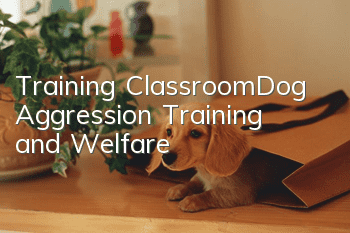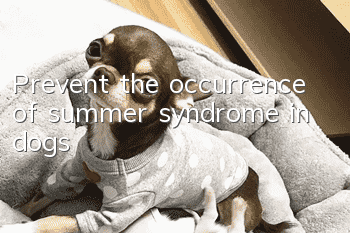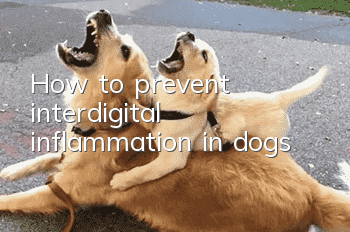Training Classroom|Dog Aggression Training and Welfare

Strictly speaking, a dog's aggressive behavior is a proactive attack based on strong self-confidence, rather than a passive counterattack. Its intention is to cause harm to the other party or to escape. Dogs display common "ferocity" due to fear, such as growling, baring teeth, biting in the air, and even erecting their hair. Their behavior to express fear adheres to the ancient philosophy of "strike first to gain the upper hand" and aims to increase the safety requirement of space distance. Is that really true?
The survival strategies of animals in nature can be divided into four major categories: one is foraging, the other is social interaction, the third is returning/avoiding enemies, and the fourth is reproduction. Therefore, active aggression is not something you are born with. It is often learned. Some are triggered by changes in hormones, and some are caused by the environment. However, after being conditioned and strengthened, this behavior can become an active attack. And more passive aggressive.
Active attack - an attack that reacts proactively when seeing the target. In the attack behavior, predatory attack, maternal attack, territorial attack, status/dominance attack,
Passive aggression - Reactive aggression forced by circumstances. Frustration aggression, defensive aggression, pain-induced aggression, approach-induced aggression, avoidance-induced aggression, aversive aggression, deflection aggression, and learned aggression.
As long as the trainer can master the training techniques well, it is not difficult to train a series of aggressive behaviors to become an active aggressive behavior. The difficulty is how to make this behavior a controlled command, or an environmental SD. Just like when a U.S. Navy dolphin patrols the harbor alone and discovers someone swimming into the harbor carrying an object, it will immediately seize the object from the person and then capture him. In an open ocean, this is not an easy thing.
It is indeed not easy to make a working dog's aggressive behavior show that it is powerful, confident, and able to take the initiative, but these reactions are not only caused by fear, and this reaction due to fear can make It breaks down and gives up any counterattack. I have experienced it myself.
During the transshipment of tigers from Southeast Asia that year, the police had two police dogs on site to guard the area. Unfortunately, the behavior of the two dogs was disappointing. When the tiger in the cage roared, the two dogs were trembling with fear. The two police officers tried their best to stabilize them. Within 3 minutes, one of the police dogs lost control and turned around. The police officers were dragged by it without control. After leaving, the other one was sitting where he was, trembling all over, and his eyes were straight. When the police saw this, they had no choice but to take it away. The total time before and after is less than 5 minutes.
In this case, it will cause harm to individual animals and cause them to escape. To enable this individual to withstand greater stress resistance, desensitization training is a more important part and must not be ignored.
All aggressive behaviors must cause it to behave aggressivelyinducement. That is, the stimulus, and the second is the reinforcer that makes the behavior continue or even strengthen. The former is a signal and the latter is a result. How to strengthen it so that it can be strengthened. It must be indispensable for the individual relationship between the trainer and the animal, and the changes in reinforcement.
If you want to train its aggressive behavior, fear is by no means a magic weapon!
Aggression caused by fear is passive aggression.
An animal can be unaware of the other person's situation, and fear can induce its aggressive behavior. However, if the difference between the two is too great, the attack will change, and the resulting behavior may be escape (Escape) or redirected aggression (Re-directed aggression). )/Displaced aggression. This is one of the basic strategies of animal survival. Maternal aggression that occurs under certain hormonal or instinctive stimulation has unexpected manifestations.
All aggressive behaviors are likely to be learned. If it is successful in an attack, the behavior will be reinforced and more likely to occur in the same environment.
As mentioned in the previous article, learned aggression is one of the methods for training aggressive behavior in working dogs. What is emphasized here is the result of its behavior, which can be its possessiveness, its food, its... As long as it is the result it expects, the factors that trigger the behavior can be diversified. .
It may be because the opponent is huge, so you can have a good meal (predatory aggression); it may be because you drive the opponent away, you can gain this territory (territorial aggression);..., you can use strengthened It is the trainer's job to establish some of the behaviors required in a working dog.
But it is never necessary to deprive animals of their welfare in order to obtain this behavior. This is unacceptable, and such behavior will not be stable or long-lasting. It is a kind of harm to the animal, damaging its health, and losing the relationship between humans and animals. The consequences are not optimistic.
I once saw a macaw being trained. In order to make it make a loud sound, the trainer used a large wooden stick to force it into a corner. It made a loud sound out of fear. The trainer obtained this in this way. Behavior, but the consequences are that when this individual sees it in the future, it will scream loudly and bump around in the cage, causing the feathers of its wings to be broken, and it will no longer be able to contact people, otherwise it will bite people who come into contact with it. It's frustration-induced aggression caused by fear, fear and pain, this is definitely a failure.
Indeed, "fear"It can induce aggressive behavior, but only part of it, but not all of it.
As a working dog, the aggressive behavior should not be caused by one type of attack factor, but should be multi-faceted so that it can truly take on some more important tasks.
All animal behavior training must comply with the requirements of animal welfare. Ignoring this will cause irreversible damage to the animal's physical and mental health. It is also sad that the trainer tries his best to realize his potential, but only gets a moment. First, he has lost a friend of his, and second, he may have been negatively reinforced.
"You don't have to be tough to succeed. That's wrong. Is the air tough? Is the water tough? But no one can live without them.
As an animal worker or trainer, you must never use means that harm animal welfare to achieve your goals for your own purposes. This approach is wrong, dangerous, unstable, and limited. , and even harm its health and life.
All the consequences of this approach are unpredictable. The trainer must bear all these consequences and reap the consequences without any regrets.
- Symptoms and treatments of gastroenteritis in dogs
- How are pit bulls trained? Teach you how to train a pit bull well!
- How to take good care of a recently neutered dog?
- What do dog breasts normally look like?
- At what age can a golden retriever eat adult dog food?
- How many pups can a Pomeranian give birth to at one time?
- What does it mean when a dog has five claws on its hind legs?
- How to train a dog to chew food? Dog owners must know!
- Symptoms of dog nasolacrimal duct obstruction
- What should I do to protect my dog’s food? How to train a dog to protect its food?



